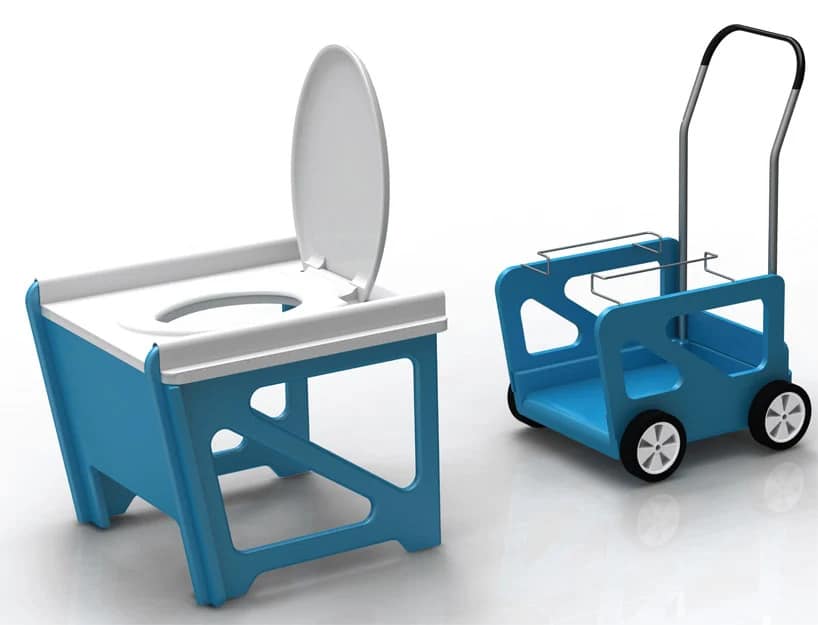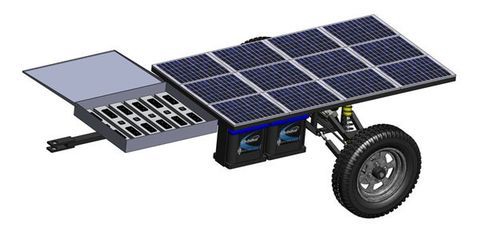Do you consider yourself a survivalist or a “prepper?” If not, you might be surprised to learn that you already own one or more of these fascinating disaster-relief inventions.
Inventors have created ingenious solutions to clean up disasters around the world, but which of them might be useful in Utah or the Mountain West? Utah is not a so-called “third-world” or “undeveloped” nation, but in the event of a natural disaster, we might be temporarily limited to third-world resources. Some of these inventions, initially designed for third-world problems, would become very relevant in the aftermath of a natural disaster.
Consider what everyday life in the Farmington, Kaysville, Layton or other Davis County city would resemble if an earthquake or a pandemic even worse than Covid-19 were to disrupt the infrastructure in such a way that water lines, electrical lines, and national transportation routes became nonfunctional. We could survive a few hours, of course, but what if we needed to go for two weeks without electricity, fresh water, or trash collection? What if the grocery stores and gas stations were closed? What if the disaster continued for longer than two weeks?
In our interconnected world, it’s hard to imagine that any of these cities could revert to a third-world environment permanently, but it might be a temporary situation after a natural disaster. For example, in Puerto Rico after Hurricane Maria and in Chile after the 2010 earthquake, relatively well-developed economies were thrust momentarily into a third-world situation because of natural disasters.
Consider these brilliant inventions that have been designed to deal with natural disasters around the world, but which would be especially helpful if the disaster were to happen here in Utah:
The LuminAID
Imagine how vital light would become if one were trying to deliver babies, rescue someone from a collapsed building, or manage a terrified crowd of people. Two Columbia University architecture students, Anna Stork and Andrea Sreshta, created the LuminAID to illuminate such situations in a disaster zone. The LuminAID is solar-powered, inflatable, waterproof, and buoyant. It has been specifically designed to make air distribution possible. There are no movable parts that would need repair or replacement. Each LuminAID provides light for up to three years.

(Photo by rei.com)
LuminAids have become relatively common among backcountry trampers and are readily available at sports and outdoor retailers. Lightweight and relatively inexpensive, LuminAids would be an invaluable resource in the event of a natural disaster.
The Disaster Relief Toilet
Many Utahns think of themselves as outdoorsy, and, indeed, many of us have more outdoor experience than our co-citizens who have grown up on one of the coasts. Utah has the 10th-lowest population density of any of the 50 states, which is one of the many things that makes it a great place to live. However, because Utah’s population is so densely clustered along the Wasatch front, high population density would be a specific challenge for Utahns in Salt Lake, Ogden, or other areas along the Wasatch front in the event of a natural disaster.

(Photo by designboom.com)
One invention that resulted from the 2010 Chilean earthquake is the Disaster Relief Toilet, created by an industrial designer named Rahim Bhimani. Bhimani personally witnessed the troubles caused by large numbers of people having nowhere to safely dispose of personal waste in the aftermath of this disaster. The Disaster Relief Toilet is easy to assemble and consists of an 18-inch-high flat-pack toilet, an encompassing privacy tent, and a waste-disposal system that includes a biodegradable drawstring bag.

(Photo by designboom.com)
An invention like this would substantially increase the public health standards of a high-density population in a natural disaster.
The ATV
ATVs have been the workhorses at many of the world’s recent disasters. They have been used to transport critically ill patients, food, and water in communities in which roads and bridges have been destroyed. For example, ATVs were used after Hurricane Irene in Vermont and flooding in Arkansas to effectively access communities that had been cut off from regular transportation routes. Although ATVs are destructive to the environment when used ignorantly, they have proven themselves indispensable around the world in managing a wide variety of severe natural disasters.
The All Terrain Solar Trailer
Another disaster relief invention which might be relevant in the event of a large-scale Utah disaster is the All-terrain Solar Trailer (ATST). Designed to help victims of a natural disaster stay connected even during long-term power outages, the ATST is a portable, solar-powered-generator station that can charge up to 100 phones at once. The ATST was engineered as a relatively lightweight trailer that could be pulled by all-terrain vehicles to reach terrain that would otherwise be inaccessible after infrastructure damage.

(Photo by popularmechanics.com)
Water filter
Clean drinking water is one of the most critical resources after a natural disaster. A human body can survive for three weeks without food, but less than a week without water. Because of its low rainfall, Utah is considered a desert state. Furthermore, the populated regions of Utah are situated in an even larger geographical area (the Great Basin) which is considered a desert climate. The Great Basin encompasses parts of Nevada, Idaho, and most of Northern Utah.
There are many water filtration systems available to the general public, and a significant number of them were originally designed for third-world or disaster situations. Because water filtration systems in disaster areas need to be relatively inexpensive, durable, and lightweight, outdoor enthusiasts have found these types of disaster-ready water filtration systems to be ideal for their needs. If you go to a local outdoor store, you will likely see quite a few filtration options, and many of them will be well-tested and engineered for durability.

